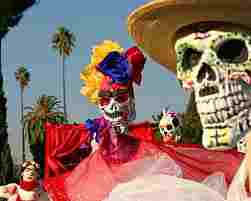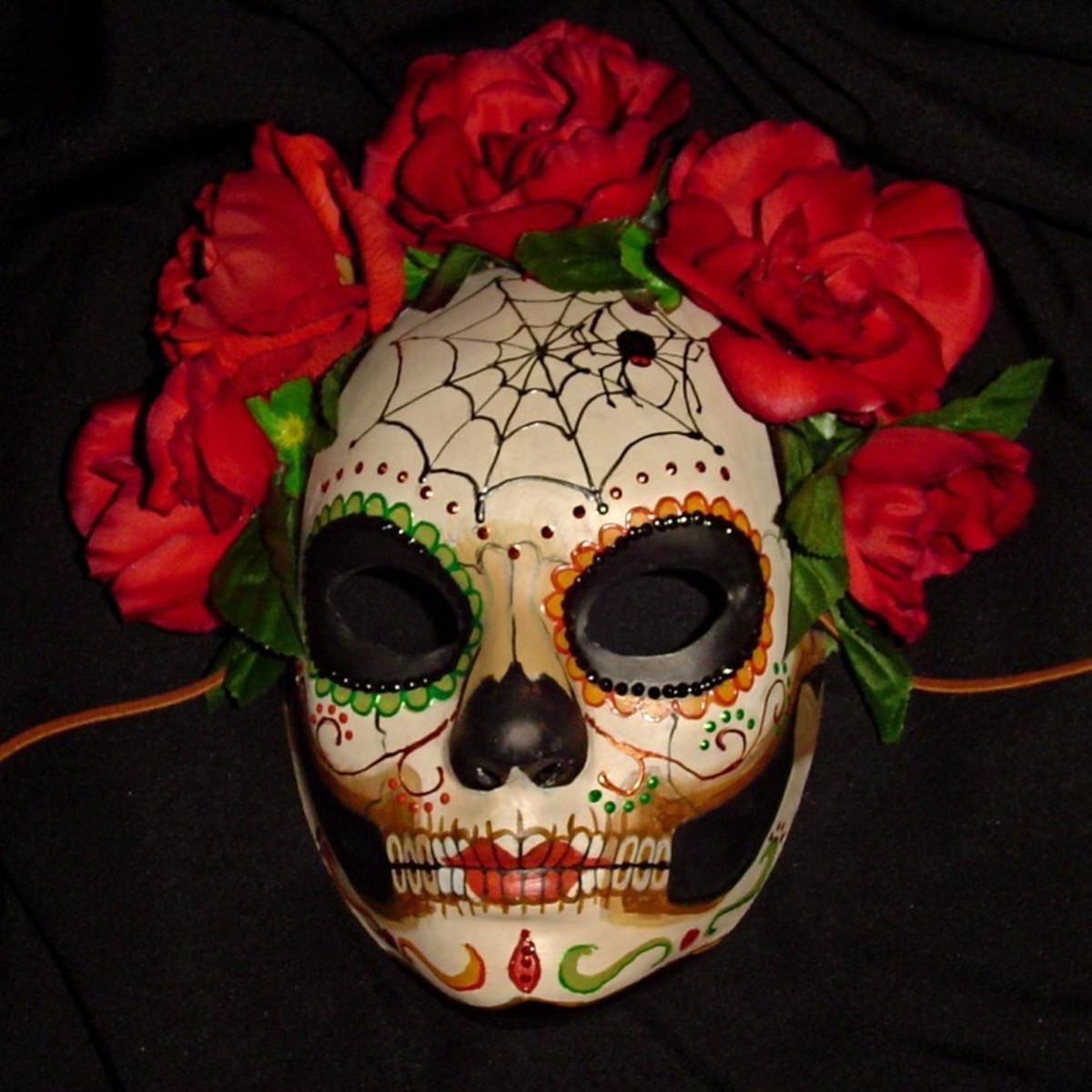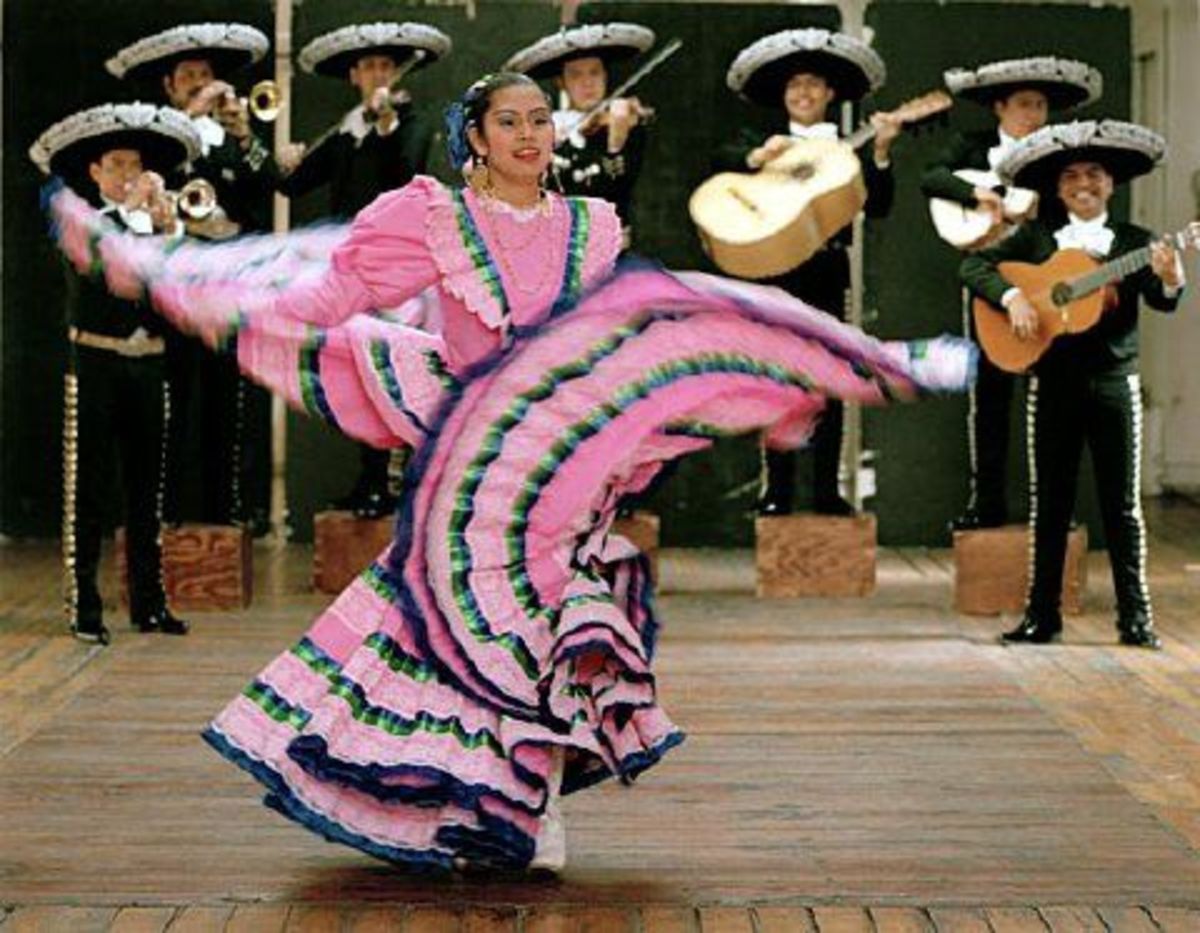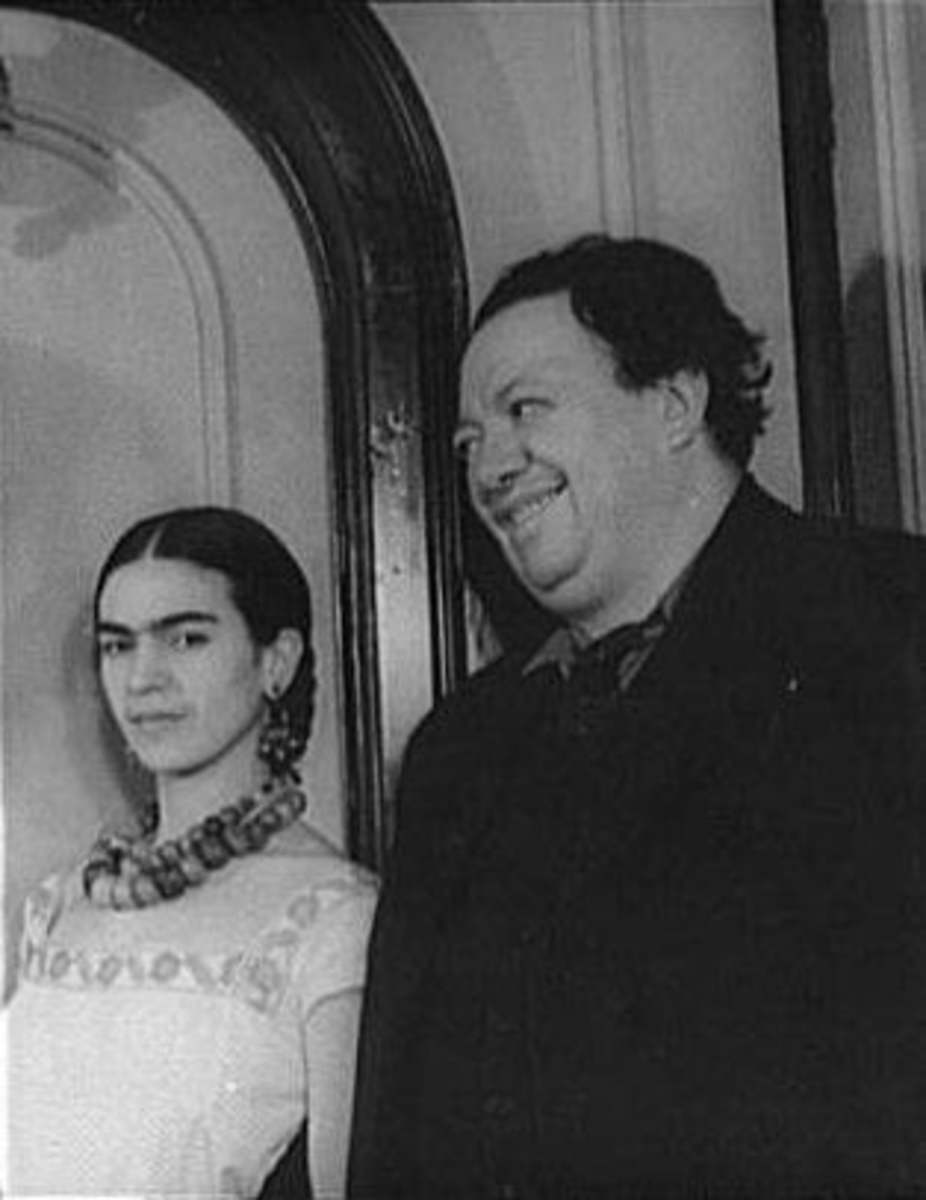Mexico's "Dia de los Muertos." The Day of the Dead.
A delighful excuse for a party

November 2nd Big Eats for the Dear Departed
The living don’t have much to celebrate about unless you’re Chinese this month; if they were conscious, the West’s dead might be happy they are that way and out of it!
That being the case or not, they have their day as far as the Mexican departed are concerned as that country celebrates the yearly “Dia de los Muertos,” or “Day of the Dead” on November 2nd .
The Mexicans are far more fatalistic about the slings and arrows of outrageous fortune which constantly beleaguer mere man, including his eventual and certain departure of this mortal coil. They don’t dwell on their eventual death; accept it when it comes to a dear one and may even play and make jokes about the departed, even while they weep.
This philosophy is showcased in my favorite Mexican song, “Valentina,” dating from the Revolution in 1910. The singer has an appointment with his lover, Valentina, but will expose himself to danger in seeing her. His last words in the song are, “If I may be killed tomorrow, let them kill me today,”
Each November 2nd is a national holiday. But death is with one and all for days before and days after. You will see the Grim Reaper ogling you from bakery windows, where special “panes de muerto,” bread of the dead, in both animal and human form titillates the taste buds. Skulls with tinselly eyes grin invitingly from candy stores.
But the markets are the best place to see the full inventory of articles and food prepared for the dear departed. Here are the special candlesticks, censers and candles of all sizes and colors; amusing toys for the kids such as little coffins from which a skeleton jumps at the jerk of a string. You can see full funeral processions in miniature with priests or mourners carrying the coffin, all made of black matte and shiny paper, with heads made of chick-peas. A multitude of paper-mache masks and dancing skeletons on sticks.
Want an emotive present for your best bloke or girlfriend? Buy a necktie pin with crazy, glimmering eyes, exposed ribs and fleshless thighbones.
This is the day for satire, too, as sheets called “Calaveras” are sold printed with insulting or amusing verse and cartoon figures of the unpopular in public life - the police always get a good drubbing and, for some reason, are addressed as “tecolotes” or owls.
In some of the large city graveyards, the dead are buried by class, from first (the rich) to as many as 6 levels, the last being the resting place of the indigent. All are visited and flowers, toys, small gifts, sweets and food, etc., are left for the dead to enjoy as best they can. At this time, priests stand by to bless the graves for a small tip. Impromptu parties flare up outside the cemeteries around vendors selling goodies for the permanent inmates as well as the traditional marigolds, called “flores de los muertos,“ or flowers of the dead, ever since Aztec times.
Householders are convinced their dead will come and visit them on this eve, so they prepare “ofrendas,“ or delicious dishes and drinks for them, trying to remember what dishes they liked in real life. The dead are not expected to really partake of the food by the pragmatic hosts, but to do so symbolically: the family tucks in with a will after evening prayers at the graveside, so nothing is wasted.
The previous day, November 1st, All Saint’s Day, is reserved for the “angelitos,” or little tots; some special treats are added to the fare for the adults and fireworks remind them of the event and addresses.
All Saints Day is also the celebration for the departed adult’s souls, who might come at any time on the eve of October 31st,.
A ceremony largely discontinued in modern Mexico, was for the men and boys to go from house-to-house to sing “albanzas” to the dead who were enjoying their offerings. They are offered a drink at each house, so arrive home suffused with more cheer.
As with all Mexican fiestas, lots of booze is available and consumed, often leading to some pretty exuberant celebrating (enough to wake the dead!).
The late author, Octavio Paz, rather cynically, pointed out that all too often these parties have ended in homicides, as old blood feuds surface, adding to the number of the dear departed for next year!








